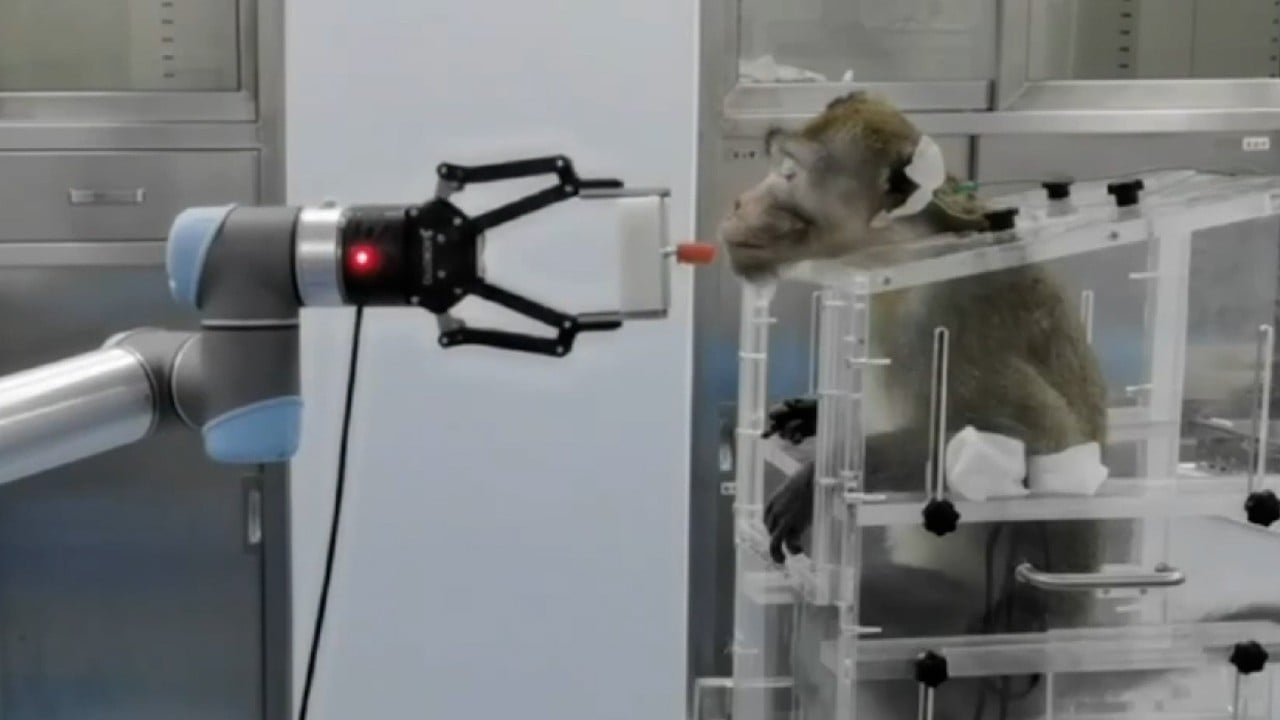
Chinese brain chip helps paralysed man regain mobility – and it’s less invasive than Elon Musk’s Neuralink
- The wireless brain-computer interface developed at China’s Tsinghua University allows quadriplegic patient to grab objects with prosthetic hand
- Unlike implant from Elon Musk start-up Neuralink, the Chinese device is not inserted into brain tissue
The patient is part of an ongoing human clinical trial that has been registered both domestically and internationally, and the device will have to undergo further study before it can seek approval for clinical use.
BCI implants have the ability to “assist severely disabled persons in communication and active rehabilitation”, Tsinghua University said in a news release.
These implants could help patients with spinal cord injuries and even diseases such as epilepsy and amyotrophic lateral sclerosis (ALS).
But BCI implants could also allow us to fuse computer and brain intelligence, expanding the brain’s processing ability, according to the university.
The Chinese team’s “minimally invasive” implant is the size of two coins and is designed to be fitted into the skull. It has no batteries, as it is powered remotely with near-field wireless power using a high-frequency antenna, Tsinghua said.
The NEO system is not implanted directly into neural tissue. Instead, its electrodes are placed into the epidural space between the brain and skull.
The electrodes pick up nerve signals and send them wirelessly to an external receiver attached to the scalp. The signals can then be decoded by a phone or computer.
For a BCI implant to be sustainable, it must be minimally invasive, according to the university.
“Compared with BrainGate, Neuralink and other implanted BCIs, our NEO system has validated a new approach of balancing intracranial BCI performance and invasiveness,” Tsinghua said.
The NEO system has undergone clinical trials in pigs, which the university said showed that the electrodes were able to perform “stable long-term recording” of nerve signals while keeping cortical neurons intact. These nerve cells in the outer layer of the brain are responsible for essential functions such as memory and learning.
In early 2023, after 10 years of developing the implant, the team received clearance to conduct their first in-human study.
The first patient implanted with the NEO system became paralysed in all four limbs 14 years ago after a spinal cord injury caused by a car accident.
In just three months of at-home rehabilitation, he has been able to grasp a bottle using a prosthetic hand.
“With the help of a machine learning algorithm, the patient can independently eat and drink by himself,” the university said.
Tsinghua said that with further rehabilitation and development of the algorithm, the patient “will be able to restore multiple hand movements and functions”.
In December, the team behind the implant, along with medical collaborators at Beijing’s Xuanwu Hospital and Tiantan Hospital, also implanted a NEO device into a second patient who is now undergoing rehabilitation.
“The next phase of the study is to develop a new protocol of BCI-facilitated active rehabilitation to accelerate neural growth at the site of damaged spinal cord segments,” the university said.



